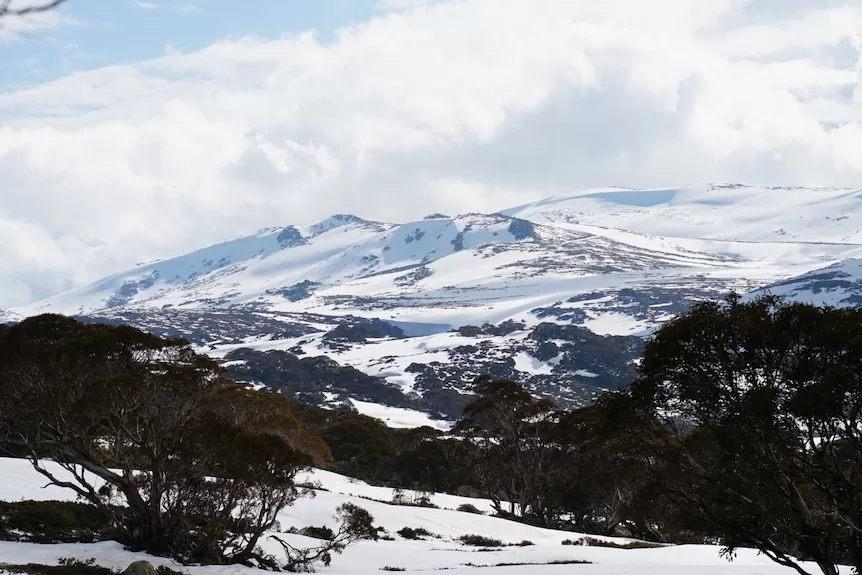- In short: New research expects climate change will cause a decline in snowfall across the globe by the end of the century.
- The study found Australia’s alps will see the greatest decline compared to six other regions in the world.
- What’s next: Researchers expect ski resorts to expand into less populated areas and rely further on making artificial snow.
A grim picture has been painted of the future of the Australian Alps, with research predicting snow cover days may fall by 78 per cent by the end of the century.
Worldwide, 13 per cent of ski areas are predicted to lose all natural snow cover by 2100.
Researchers from the University of Bayreuth in Germany have today published a study in the journal PLOS One, prompting calls from academics to reinforce an urgent need to address climate change.
The study puts Australia’s rate of decline as the highest when compared to six other major skiing regions in the world, including New Zealand, Europe and Japan.
“I’m not surprised by the findings of this report, to be honest,” Climatologist and Australian National University Professor Janette Lindesay said.
“There’s no doubt that we’re heading for an even warmer future.”
The study found one in eight ski areas across the globe, or 13 per cent of winter ski slopes, were predicted to lose all natural snow cover this century under a high emissions scenario.
High emissions referred to one of three climate change scenarios based on the Shared Socio-economic Pathways model laid out in the study, alongside “low” and “very high”.
Study co-author Dr Veronika Mitterwallner said her team focused on the “high emission” projection to summarise their findings because they considered it the most current and realistic scenario of the three.
Despite this, the study found annual snow cover days across all seven “major mountain areas with downhill skiing will significantly decrease worldwide” across all three scenarios.
Professor Lindesay said it reinforced a need to ramp up efforts to tackle climate change and lessen potential damage to alpine environments.
“The scenarios are effectively storylines … taking into account possible future carbon dioxide emissions, socio-economic circumstances, population growth and possible policy responses to global heating,” she said.
“The best thing we can do is get emissions down to net zero as fast as we possibly can.”
Snow resorts face change
The study predicts snow resorts may need to move or expand into less populated mountain areas at higher elevations to combat the effects of climate change.
But University of Canberra based geomorphologist Phil Campbell said that would not necessarily work in Australia where ski resorts were at a lower altitude compared to other countries.
“One of the problems in Australia is that we’re fairly low in our ski resorts, which are already at the very top of our mountains,” he said.
“We’re not going to have the same ability as many other countries do to be able to relocate our ski resorts.
“The same goes for endangered plant species as well, because there’s nowhere for them to retreat to.”
Mr Campbell has been studying snow patches in Australia’s Alps as part of his PhD, but he said research on the decline of snowfall had existed since the 1980s.
“It’s no surprise, unfortunately, and climate change has been a grim reality for people working in the alpine area already for many decades,” he said.
“It’s another reminder that we really have to have action on climate change.”
An ‘opportunity’ for new approaches
The report anticipates that the economic profitability of ski resorts around the globe will fall due to the effects of climate change on snow cover.
The ABC has contacted ski resorts in the NSW Snowy Mountains and Victorian Alps for comment on the study’s findings.
In the town of Jindabyne, in the foothills of NSW’s Kosciuszko National Park, local Chamber of Commerce president Olivier Kapetanakos said the research validated the snow decline locals had seen for some time.
“It’s fair to say most of us who live in the mountains are quite aware of the change, and we’ve been seeing it,” he said.
“This is going to help us prepare for it.”
The research found some ski resorts might need to rely further on snow-making practices to make up for any future losses in cover.
Mr Kapetanakos supported this, but said greater investment into year-round tourism, like mountain biking, fishing and hiking facilities in summer months, would also lessen the economic impact on businesses that traditionally relied on peak winter tourism periods.
“We wanted to have a 12-month economy rather than just relying on a winter economy,” he said.
“I don’t think the future is as grim as what we would think it is because we’re losing snow.”
“I think it just creates opportunity.”
